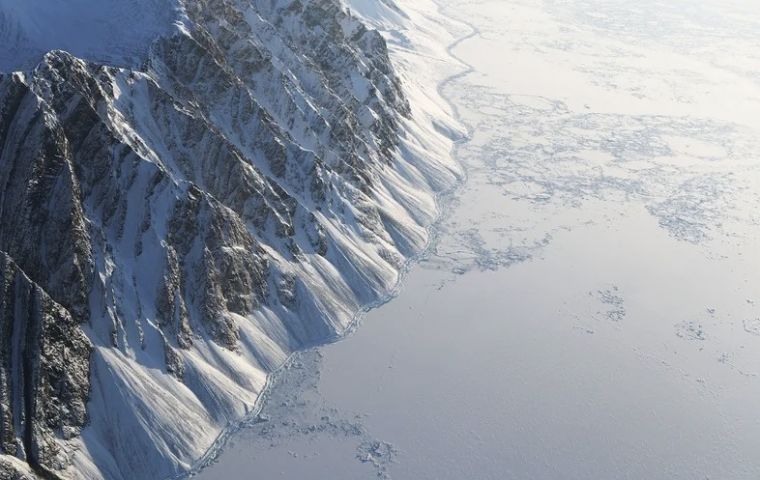MercoPress. South Atlantic News Agency
Increased levels of fluorinated chemicals in Antarctic snow cores, scientific research
 Researchers extracting a snow core near Kohnen station in East Antarctica to reconstruct a history of atmospheric pollution. Photo: BAS, Markus Frey.
Researchers extracting a snow core near Kohnen station in East Antarctica to reconstruct a history of atmospheric pollution. Photo: BAS, Markus Frey. Scientists have recorded markedly increased levels of ‘fluorinated forever chemicals’ in Antarctic snow which are thought to have originated from the use of CFC-replacements.
A team of researchers, led by the University of Lancaster and including British Antarctic Survey (BAS) scientists, extracted and analyzed compacted snow cores from the Dronning Maud Land plateau of eastern Antarctica. These cores include particulates that were released from the atmosphere during snowfall and so provide a historic record of the atmosphere between 1957 and 2017. They found that in this time, levels of fluorinated forever chemical have risen consistently with a marked increase in the last few decades.
Fluorinated forever chemicals have a range of uses including in non-stick coating for pans and fire-fighting foams but do not break down naturally when released in the environment. The most abundant chemical identified was the compound, perfluorobutanoic acid (PFBA), concentrations of which were shown to increase significantly between 2000 until the core was taken in 2017. The cause of this increase is unknown, but researchers suggest that release of volatile ‘precursor’ chemicals into the atmosphere at industrial manufacturing sites could be a major contributor.
Dr Jack Garnett , environmental chemist at Lancaster University who conducted the chemical analysis on the snow samples, said: “The large increase in PFBA observed from the core, particularly over the last decade, suggests there is an additional global source of this chemical other than polymer production. We do know that some of the chemicals replacing the older ozone-depleting substances like CFCs and HCFCs, such as the hydrofluoroethers, are produced globally in high quantities as refrigerants but can breakdown in the atmosphere to form PFBA. The Montreal Protocol certainly provided huge benefits and protection to the ozone, the climate and to us all. However, the wider environmental and toxicity impact of some of these replacement chemicals is still unknown.”
The results, which are consistent with modeled estimates of PFBA chemical emissions, further add to evidence that show increases in these fluorinated forever chemicals in the Arctic and the Tibetan Plateau and helps provide a global picture and further understanding of how chemicals such as these are transported in the atmosphere.
Dr Anna Jones, Director of Science at British Antarctic Survey, said: “These findings are a sobering reminder that our industrial activities have global consequences. Antarctica, so remote from industrial processes, holds this next signal of human activity arising from emissions thousands of miles away. The snow and ice of Antarctica are critical archives of our changing impact on our planet”.
The full study, Increasing Accumulation of Perfluorocarboxylate Contaminants Revealed in an Antarctic Firn Core (1958-2017) by Garnett, J., Halsall, C., Winton, H., Joerss, H., Mulvaney, M., Ebinghaus, R., Frey, M., Jones, A., Leeson, A., Wynn., P is available to read in the journal Environmental Science & Technology.




Top Comments
Disclaimer & comment rulesCommenting for this story is now closed.
If you have a Facebook account, become a fan and comment on our Facebook Page!